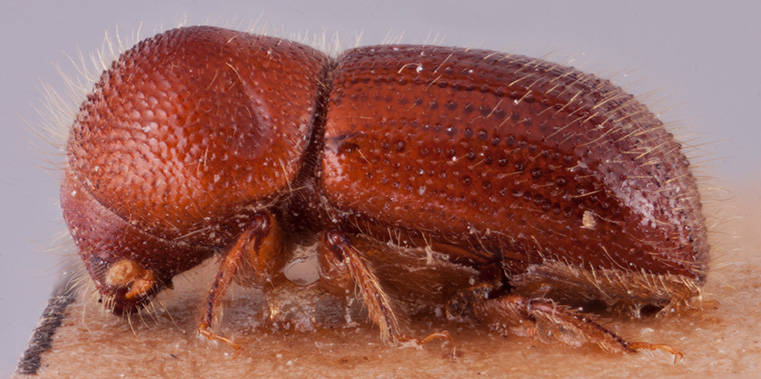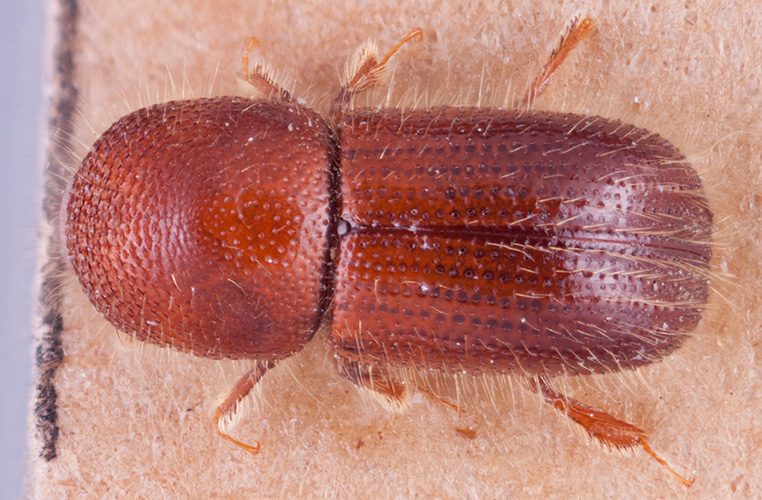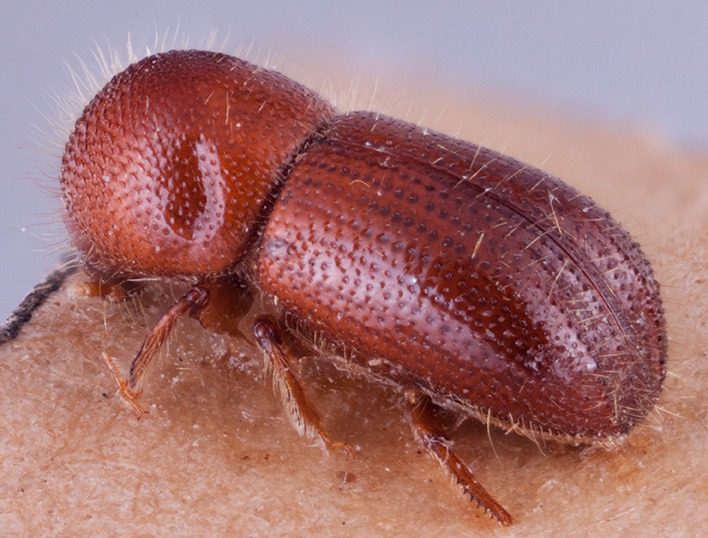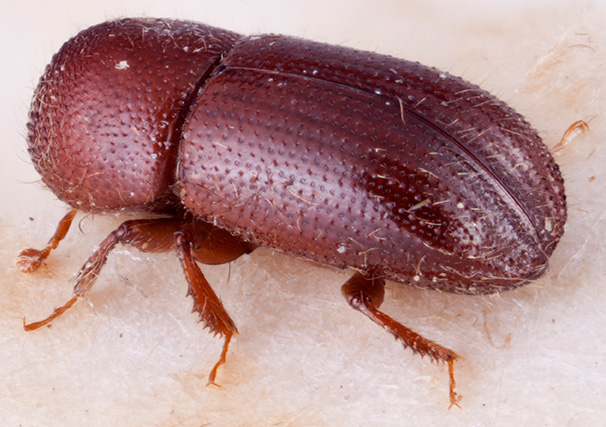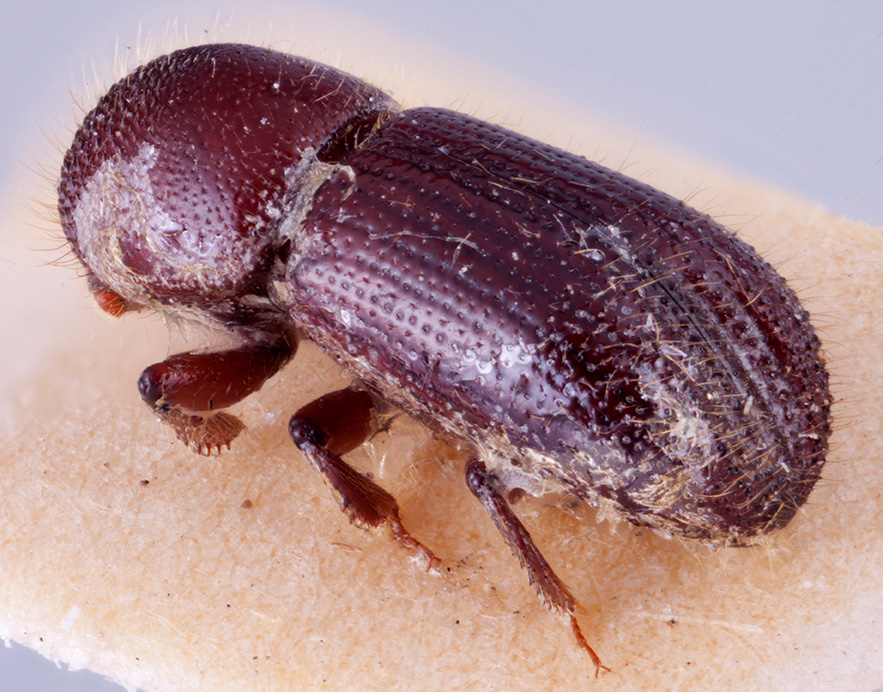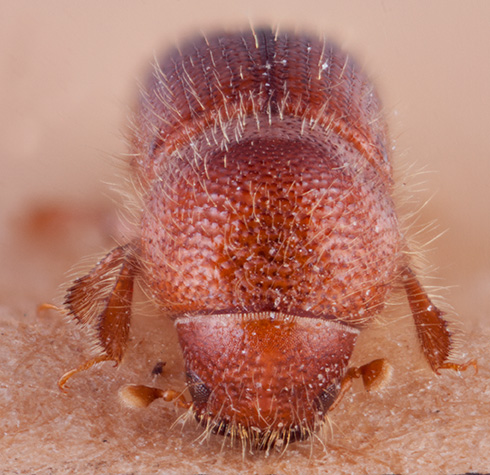Ambrosiophilus sulcatus
|
Ambrosiophilus sulcatus holotype lateral; R.K. Osborn |
|
Ambrosiophilus sulcatus holotype dorsal; R.K. Osborn |
|
Ambrosiophilus sulcatus holotype declivity; R.K. Osborn |
|
Ambrosiophilus sulcatus (Xyleborus sulcatulus holotype) declivity; R.K. Osborn |
|
Ambrosiophilus sulcatus (Xyleborus sinensis holotype) declivity; R.K. Osborn |
|
Ambrosiophilus sulcatus holotype frontal; R.K. Osborn |
Taxonomic history
Xyleborus sulcatus Eggers, 1930: 180.
Ambrosiodmus sulcatus (Eggers): Wood and Bright, 1992: 680.
Cyclorhipidion sulcatum (Eggers): Maiti and Saha, 2004: 118.
Ambrosiophilus sulcatus (Eggers): Beaver and Liu, 2018: 537.
Synonyms
Xyleborus sulcatulus Eggers, 1939a: 13. Smith et al. 2020b: 71.
Xyleborus sinensis Eggers, 1941b: 224. Smith et al. 2020b: 71.
Diagnosis
3.4−4.5 mm long (mean = 3.94 mm; n = 5); 2.5−2.87 times as long as wide. This species can be distinguished by all declivitaldeclivital:
pertaining to the elytral declivity
interstriae granulategranulate:
pertaining to a coarse, grainy surface texture
 along the entireentire:
along the entireentire:
without marginal teeth or notches
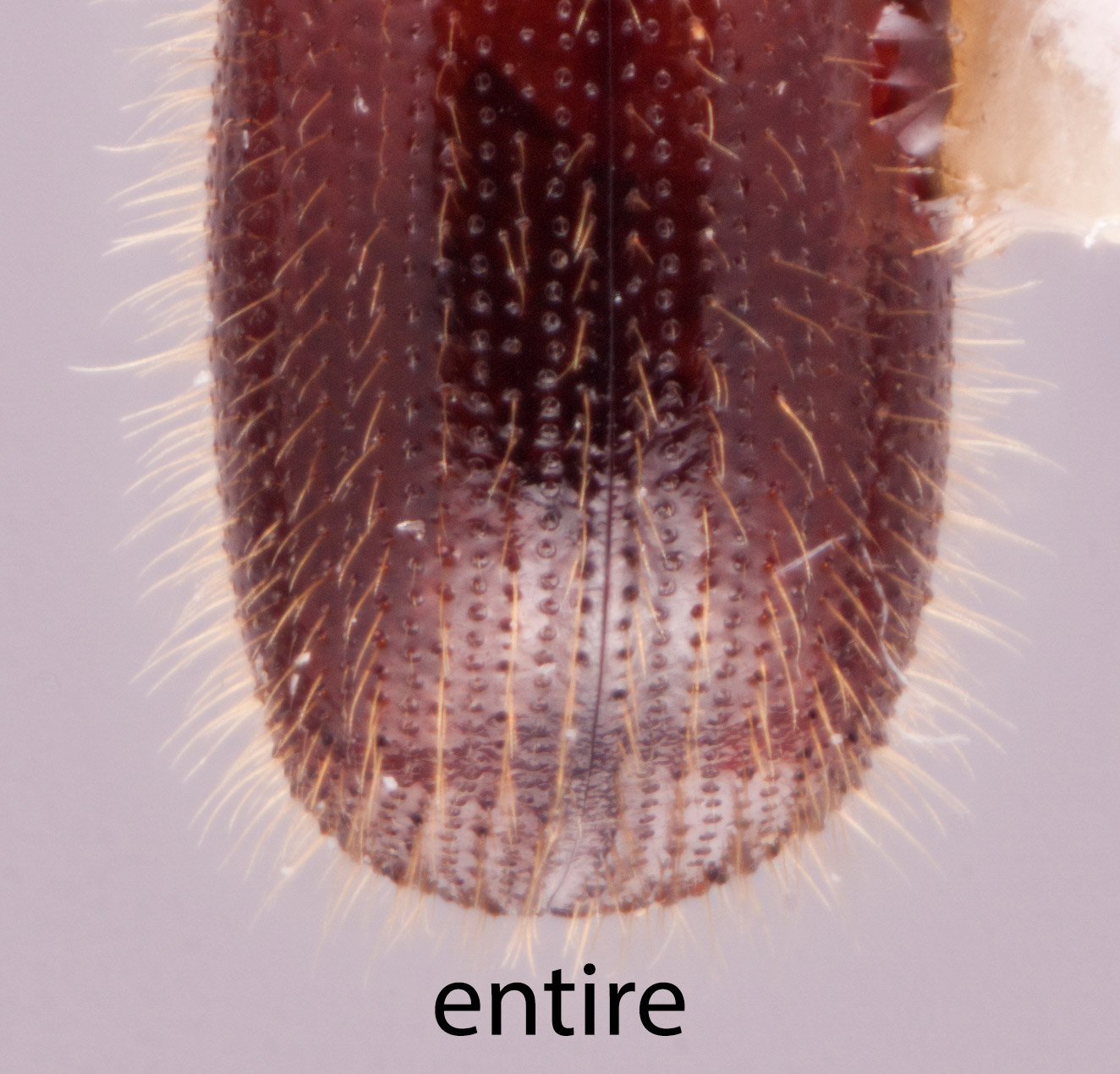 length; pronotumpronotum:
length; pronotumpronotum:
the dorsal surface of the thorax
from dorsaldorsal:
of or relating to the upper surface; opposite of ventral
 view basic (type 2); pronotalpronotal:
view basic (type 2); pronotalpronotal:
pertaining to the pronotum
declivitydeclivity:
downward slope of either the pronotum or elytra
 rounded; pronotalpronotal:
rounded; pronotalpronotal:
pertaining to the pronotum
anterioranterior:
the front or forward; opposite of posterior margin without a row of serrations; pronotumpronotum:
margin without a row of serrations; pronotumpronotum:
the dorsal surface of the thorax
from laterallateral:
pertaining to the side
 view tall (type 2); elytralelytral:
view tall (type 2); elytralelytral:
pertaining to the elytra
declivitydeclivity:
downward slope of either the pronotum or elytra
 weakly to strongly bisulcatebisulcate:
weakly to strongly bisulcatebisulcate:
pertaining to an elytral declivity with two suci; a sulcus present on each elytron but the suture remains convex
between striaestria:
punctures in rows, which may or may not be impressed to make grooves 1 and interstriaeinterstria:
1 and interstriaeinterstria:
longitudinal spaces along the elytra between the striae, which is not as<br />
impressed and bear smaller punctures.
 3; interstriaeinterstria:
3; interstriaeinterstria:
longitudinal spaces along the elytra between the striae, which is not as<br />
impressed and bear smaller punctures.
 densely and uniformly granulategranulate:
densely and uniformly granulategranulate:
pertaining to a coarse, grainy surface texture
 , granulesgranule:
, granulesgranule:
a small rounded protuberance, like grains of sand
 on interstriaeinterstria:
on interstriaeinterstria:
longitudinal spaces along the elytra between the striae, which is not as<br />
impressed and bear smaller punctures.
 3 spaced by a distance of less than the diameter of a granulegranule:
3 spaced by a distance of less than the diameter of a granulegranule:
a small rounded protuberance, like grains of sand
 ; interstrial setaeseta:
; interstrial setaeseta:
small hair-like or scale-like structure
long, hair-like; and large size.
Ambrosiophilus sulcatus is variable in body length, the degree of bisulcation of the elytralelytral:
pertaining to the elytra
declivitydeclivity:
downward slope of either the pronotum or elytra
 and in the size of the declivitaldeclivital:
and in the size of the declivitaldeclivital:
pertaining to the elytral declivity
granules, but all specimens form a continuous spectrum of variation. Specimens from India and China (Fujian) are larger, more strongly bisulcatebisulcate:
pertaining to an elytral declivity with two suci; a sulcus present on each elytron but the suture remains convex
and have slightly larger granulesgranule:
a small rounded protuberance, like grains of sand
 than specimens occurring further south (Myanmar and Vietnam).
than specimens occurring further south (Myanmar and Vietnam).
May be confused with
Ambrosiophilus atratus, A. caliginestris, A. latisulcatus, and A. satoi
Distribution
China (Fujian, Jiangxi, Yunnan), India (Assam, West Bengal), Myanmar, Nepal, Taiwan, Vietnam
Host plants
recorded only from Artocarpus (Moraceae) (Beeson 1930Beeson 1930:
Beeson CFC. 1930. The biology of the genus Xyleborus , with more new species. Indian Forest Records 14: 209-272.)
Remarks
The type specimens of Xyleborus sinensis, X. sulcatulus, and type images of X. sulcatus were directly examined. The specimens differ in size (2.8 mm X. sulcatulus, 3.0 mm, X. sulcatus, 4.2 mm X. sinensis), the depth of the elytralelytral:
pertaining to the elytra
declivitaldeclivital:
pertaining to the elytral declivity
sulci, and in the degree development of interstrial granulesgranule:
a small rounded protuberance, like grains of sand
 . Additional non-type specimens were also examined. We found that size, depth of the declivitaldeclivital:
. Additional non-type specimens were also examined. We found that size, depth of the declivitaldeclivital:
pertaining to the elytral declivity
sulci, and development of interstrial granulesgranule:
a small rounded protuberance, like grains of sand
 formed a continuum of variation.
formed a continuum of variation.
DNA data
Sequences available for COI and CAD.
COI: MN619838
CAD: MN620131

